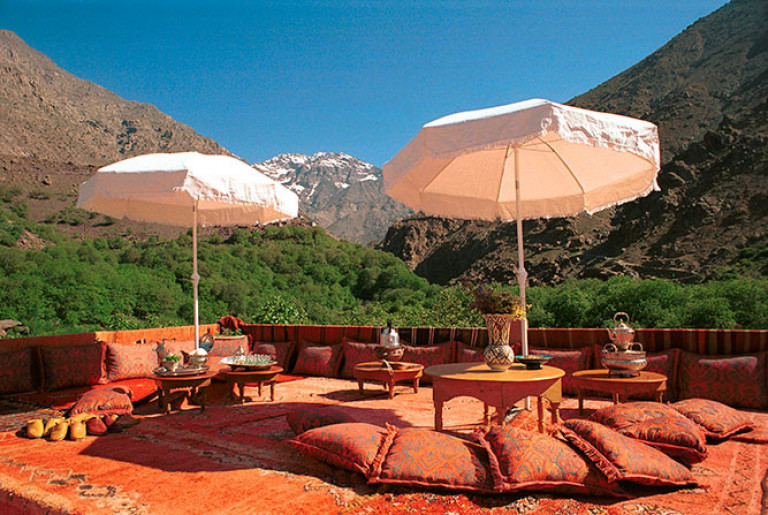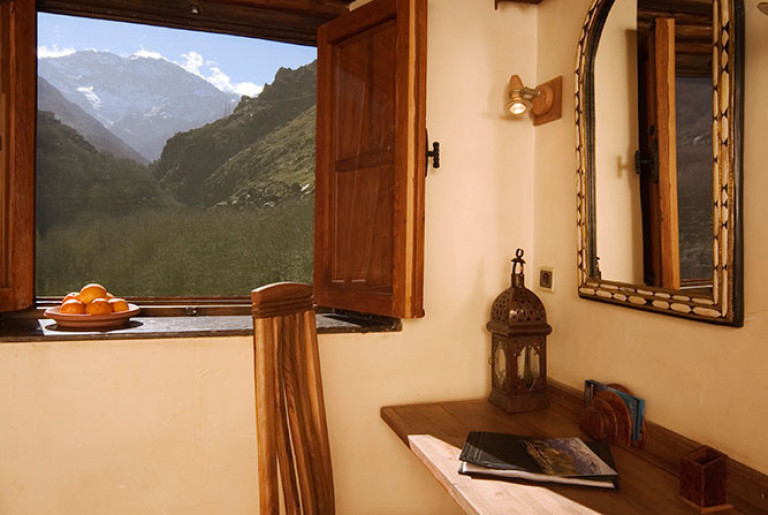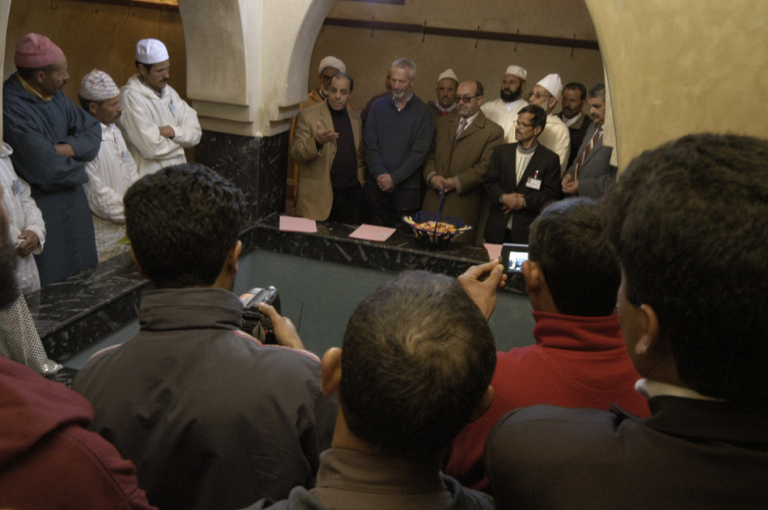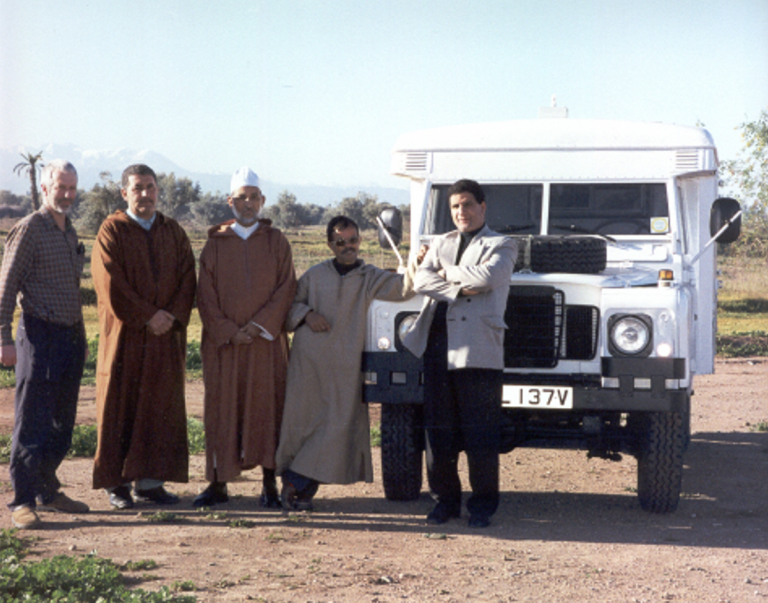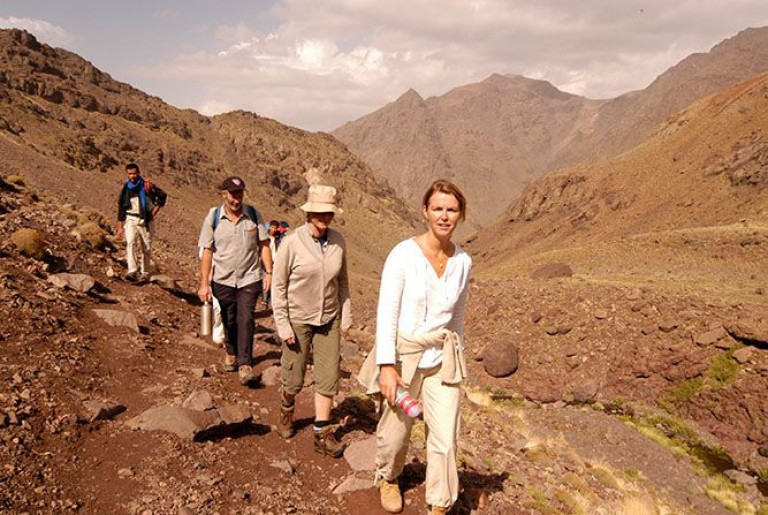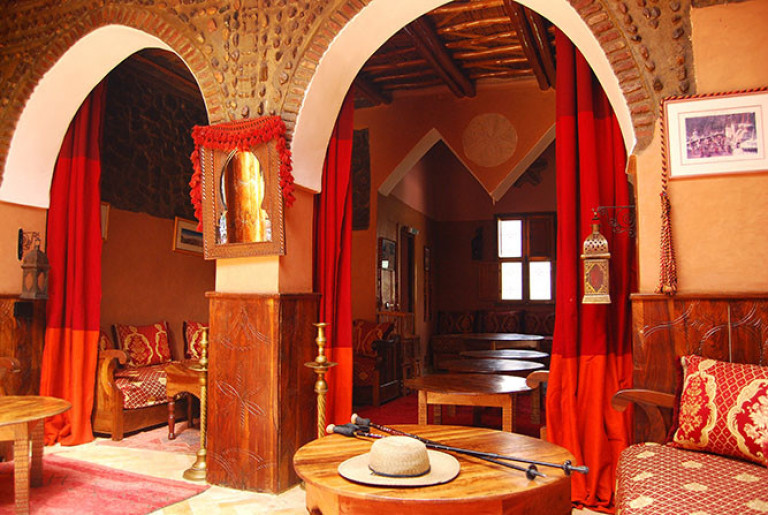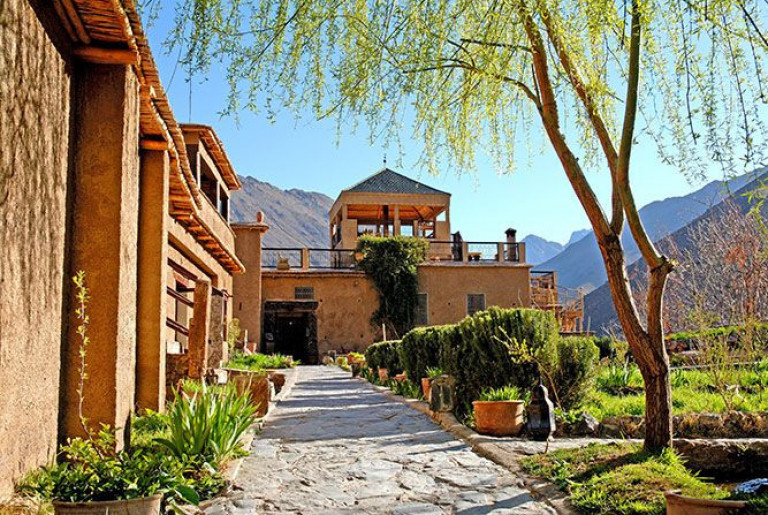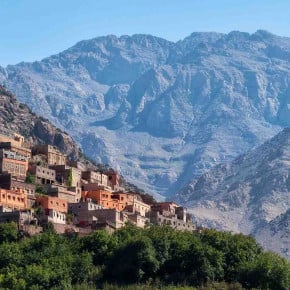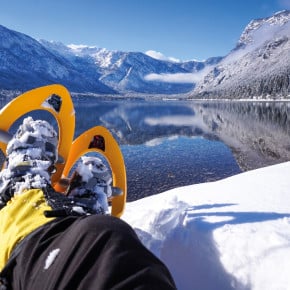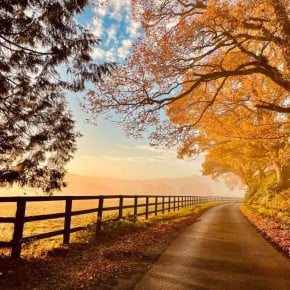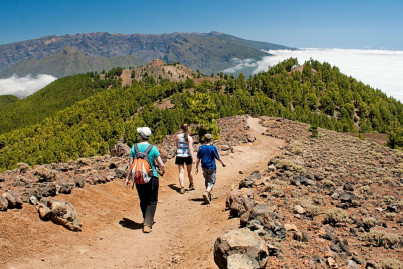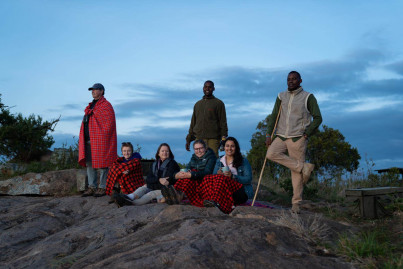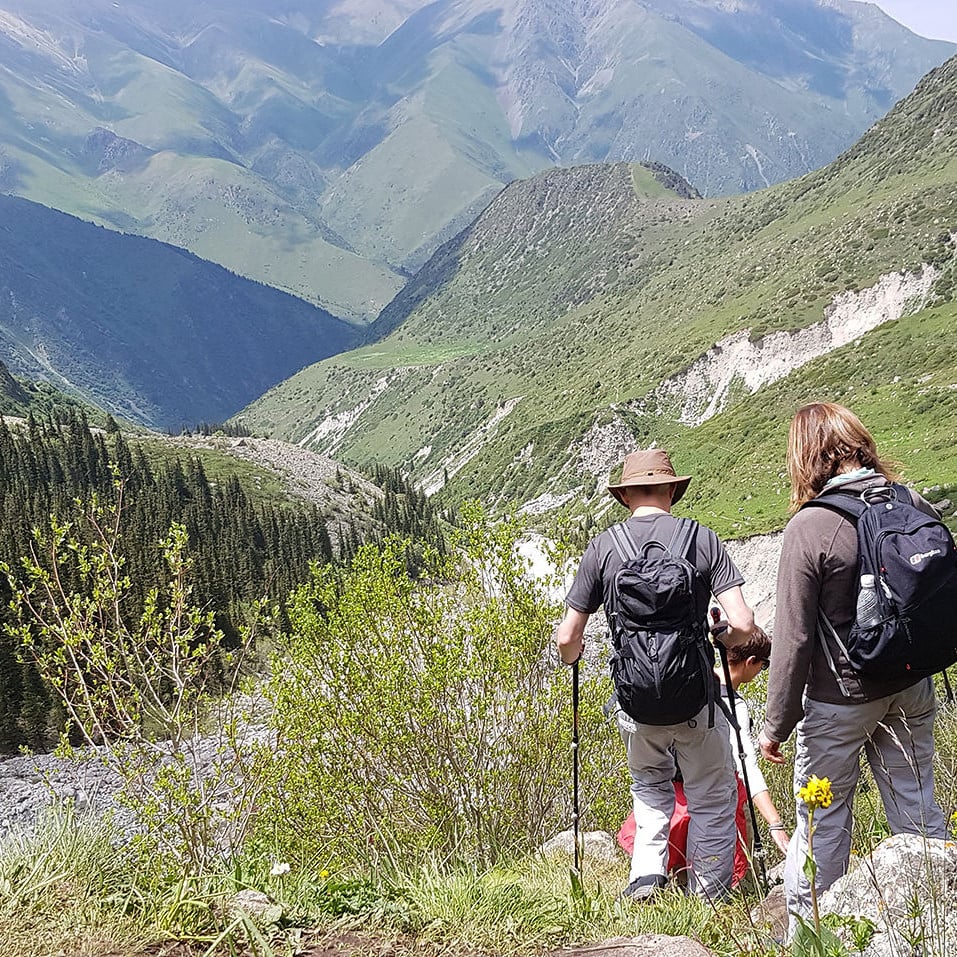The luxurious accommodation at the Kasbah du Toubkal in the High Atlas Mountains of Morocco, beautifully situated at the trailhead of the village of Imlil, is just 40 miles from Marrakech, but seemingly a thousand miles from the hubbub of the city life.
How many mountain refuges in the Alps offer rose water to sprinkle on your hands and face after a hard day’s hike? This truly is Trekking in Style! Experience many more aspects of the traditional Berber hospitality and culture including delicious cuisine in this timeless haven from the world.
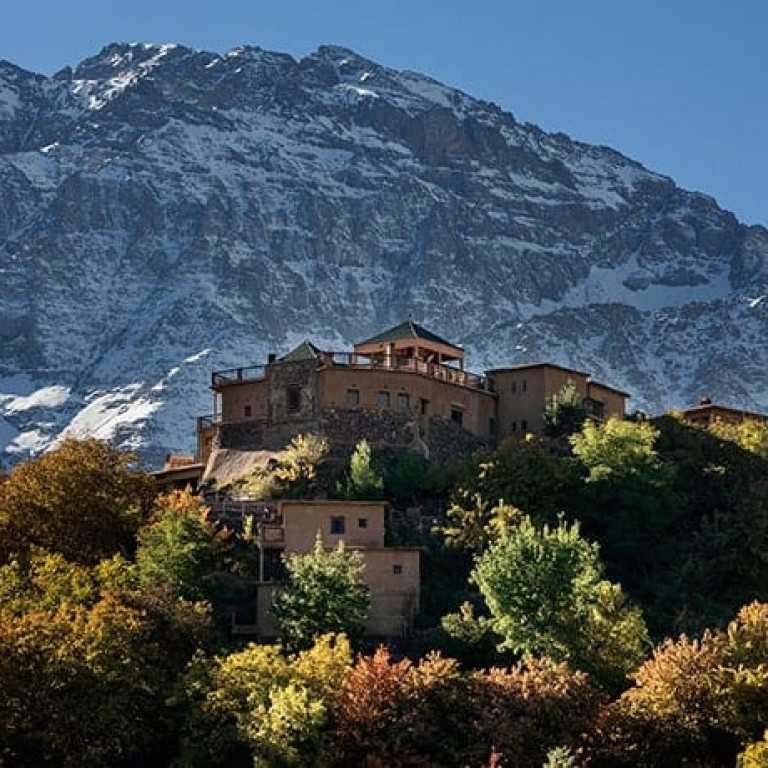
The Kasbah du Toubkal marries European/’Western’ needs and values with those of the local Berber community. The result of a joint dream by 2 British brothers, and Hajj Maurice, born in Imlil village, the Kasbah was built on the foundations of the former home of the local feudal lord (Caid) and was transformed into a unique mixture of a Berber Hospitality centre and a comfortable mountain auberge.
Initially a mountain lodge and field study centre in the early 1990s, Martin Scorsese used the Kasbah in his film 'Kundun', converting it temporarily into a Tibetan Monastery! Income from the production was used by the Kasbah team to establish a local charity 'The Association des Bassins d'Imlil' (ABI) which received, and continues to receive, 5% of the Kasbah turnover in support. The ABI has donated an ambulance to Imlil as well as opening the Village Bath House. Using the Kasbah ensures continued support for the ABI.
Mike McHugo, one of the British owners went on to establish another charity; Education for All, which provides safe boarding houses for girls from mountain villages, to enable them to attend secondary schools. As part of our adventures, we are working to increase awareness of this wonderful charity, doing such important work in the area we visit.
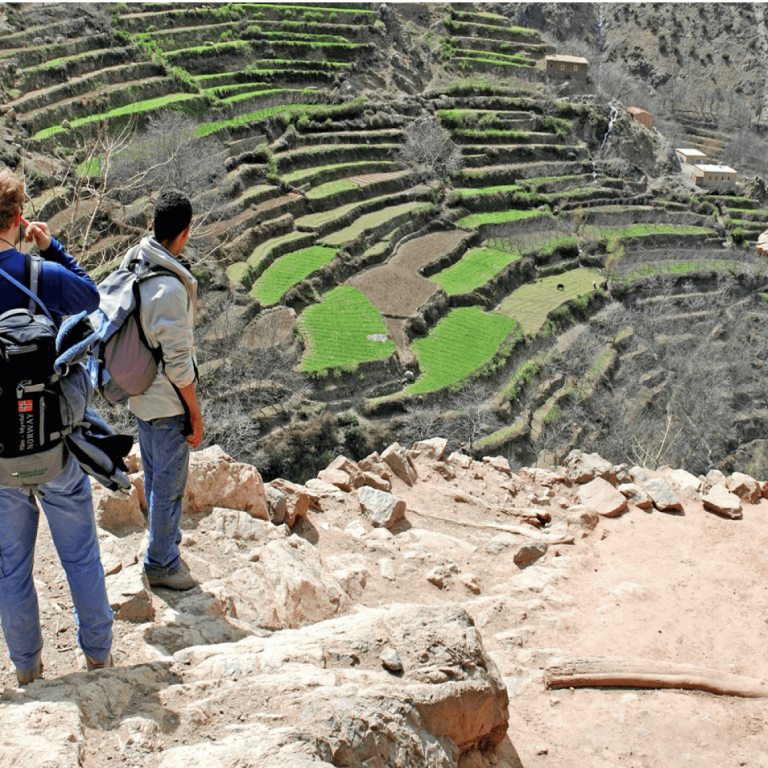
The High Atlas Mountains, which dominate the skyline to the south of Marrakech, have several peaks above 4000 metres, the Western High Atlas is part of a larger chain of mountains that spreads from the Atlantic Coast in the west to Tunisia in the east.
Pliny, the Roman geographer, described the Atlas peaks as the most fabulous mountains in all of Africa, whilst Louis Neltner (after whom the CAF hut at the base of Toubkal is named) described them as “neither more nor less beautiful than the Alps, but something different”.
The Berber name for the High Atlas Mountains is Idraren Draren (Mountains of Mountains). The Toubkal Massif, which we explore, is made up largely of green volcanic rocks, Andesites and Rhyolites, which are fractured and bedded together, producing huge scree slopes, making for dramatic views and exciting trekking trails!
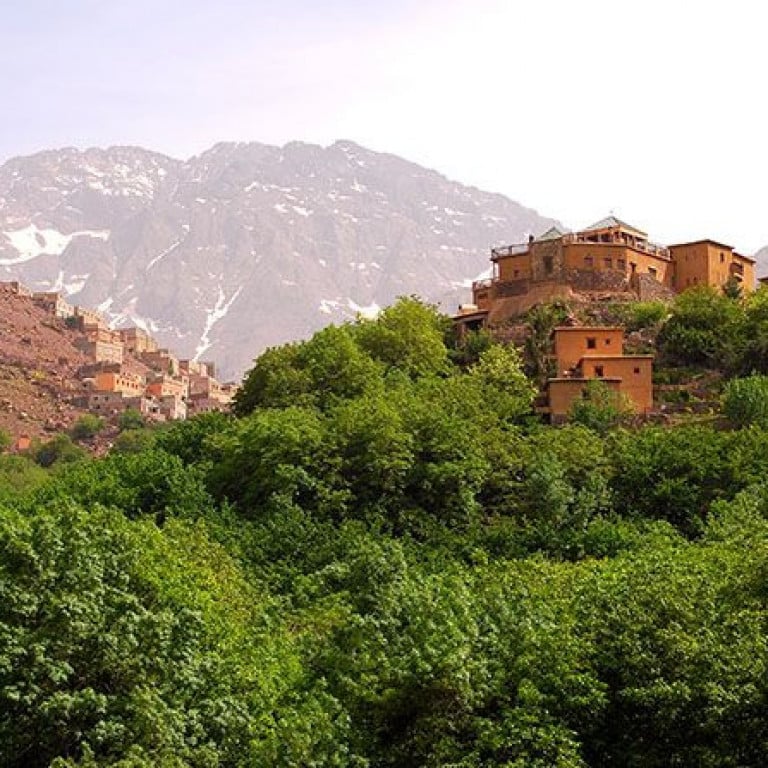
The mountains are home to the indigenous Berber people who have inhabited Morocco for at least 5000 years. The Berbers live in small clusters of earthen adobe houses which cling precipitously to mountainsides and are often only accessible by mule or foot. They are a hard-working people and have retained their independence and traditionally earned their living mainly by working the land. As mountain tourism has developed, many have adapted to become guides/muleteers and some into souvenir sellers. Their lives are changing rapidly as more money comes into their area from tourists and the authorities begin to develop the area. Electricity arrived in 1997, the tarmac road in 2003 and phones in 2004.
As Tourism has developed, the area has moved from a subsistence economy with a cash crop of walnuts, to more of a cash economy, the agriculture has also changed from subsistence to cash crops of soft fruit. As you trek deeper into the mountain range, to more remote valleys, such as Azzaden, you will see more of a subsistence economy.
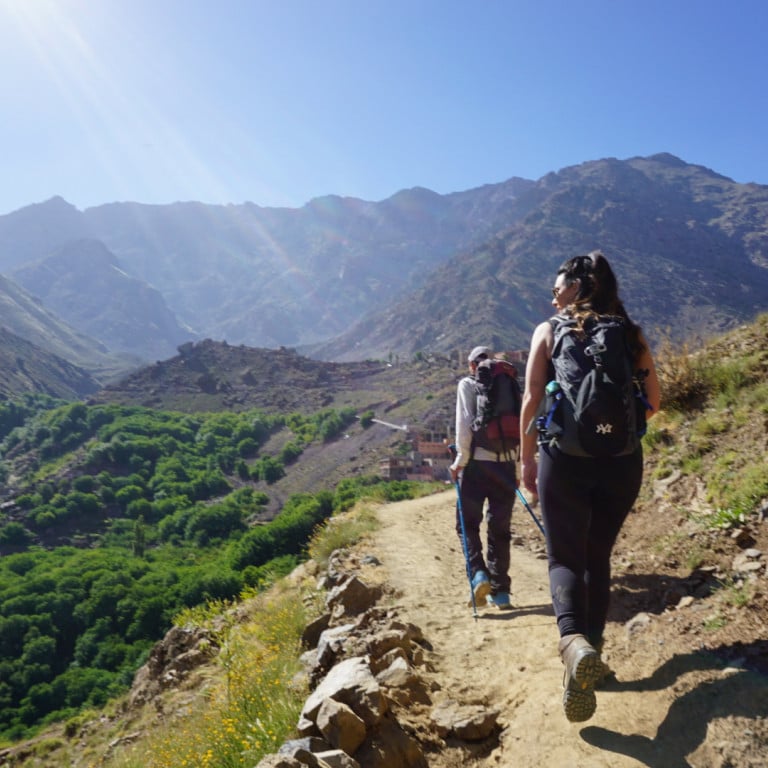
During any of our Hiking the High Atlas departures, summer and winter, you will be able to trek from the Kasbah (at 1800m), just outside the village of Imlil, along footpaths and mule tracks which mount through the lush, irrigated terraces, apple orchards and walnut groves to other villages and into the Azzaden valley where you will have a glimpse into a way of life that has barely changed for centuries, and where traditional values and hospitality have been largely unaffected by the outside world.
During summer months, you also enjoy the option of doing a Jebel Toubkal ascent trek, taking you. up to 4167m, with 2 nights en-route in trekking lodges.
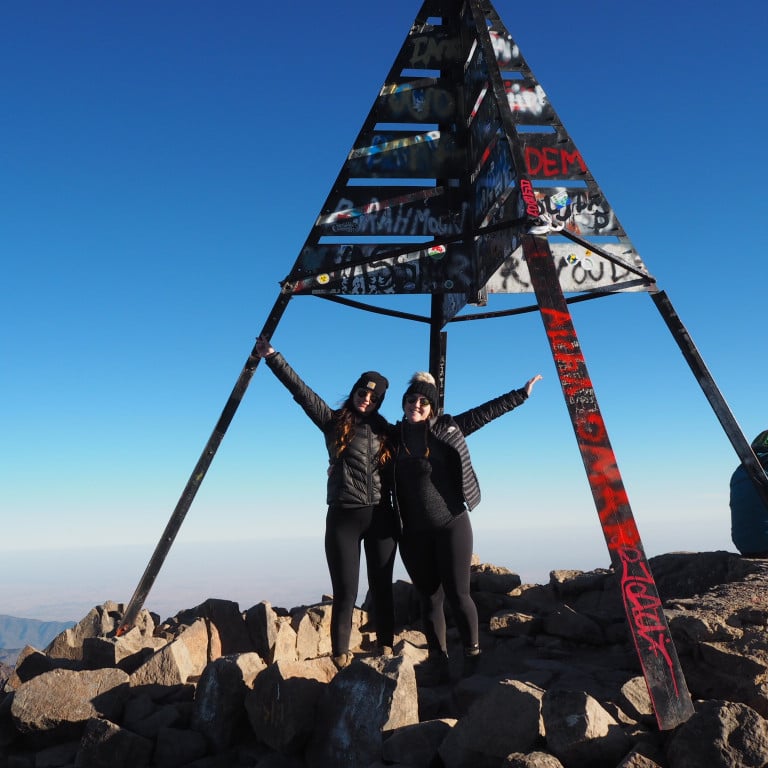
This highest summit was not assuredly identified until 1922 although the Atlas were probably climbed by Berber tribesmen long before recorded ascents began. The first “official” expedition to the Atlas was therefore in 1871 when a small scientific expedition organised by J. D. Hooker was given permission to visit the Toubkal region. The first European to the top of Jebel Toubkal was the Marquis de Segonzac in June 1923, and the height of the mountain was determined in 1924, with a trigonometrical signal raised on the summit in 1931. The first British man to the summit was B. Beetham in 1926.
Walking the Jebel Toubkal summit trek requires a sense of perspective and a gentle pace. If the weather is hot it is also vital to drink plenty of water. If you have not walked at heights of 4000 metres before, do not be surprised at needing a slower pace, which is certainly the best way to get to the top no matter how fit you are.
You can see the full trek itinerary here:
https://yellowwoodadventures.com/adventures/hiking-moroccos-high-atlas-mountains/overview

